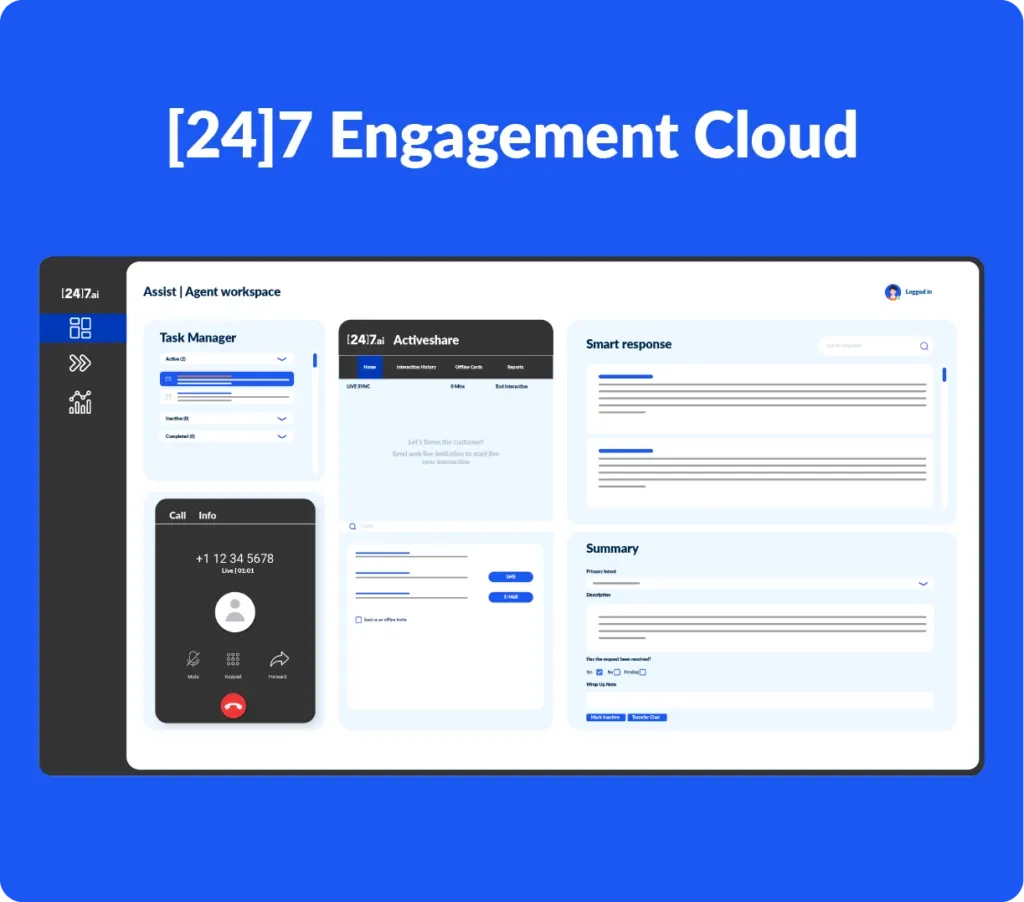Remember the ‘old days’ of customer service? When ‘Please hold, your call is important to us’ was practically a mantra? Gone are the days of pressing button after button, trying to outsmart a phone tree. Later, self-service began to evolve, offering customers a semblance of control via clunky online forms and robotic phone menus. Helpful? Sort of. Frustrating? Absolutely.
Today, AI has entered the chat, literally. Smart chatbots and virtual assistants are the new norm, understanding questions and responding with uncanny accuracy. Reports indicate that the chatbot market (a big slice of the AI self-service pie) is booming and is projected to hit a whopping USD 1.25 billion by 2025. As we zip into an AI-enhanced future, AI in self-service is gearing up to know our needs even before we do and amplifying customer experience.
The Rise of AI in Self-Serve: Success Story
A leading US Satellite TV provider lacked adequate automation and was struggling to deal with sky-high call volumes. High dependency on voice calls to resolve customer queries was increasing costs and customer churn. It was time to transform customer service. We helped them deploy a sleek AI-powered Virtual Assistant to digitize customer interactions and enable self-service. The result? A whopping $34.4 million saved, 60% of queries self-served, and a 63% leap in customer satisfaction. With 93.5% containment rate, we deflected 4.2 million contacts, streamlining everything from device setup to billing queries.
Personalized, Predictive, Omnichannel Self-Serve: AI’s Custom Touch
AI-driven systems use technologies like natural language processing (NLP) to understand your queries in plain English (or any language, really). No more “Sorry, I didn’t catch that” loop. These systems sift through massive amounts of data to identify patterns and preferences. They’re equipped with machine learning, so they get smarter over time. The more you interact, the more refined the AI’s understanding becomes, leading to increasingly accurate and personalized experiences. For businesses, it’s about handling a higher volume of inquiries and improving response times without breaking a sweat (or the bank). For customers, it’s about getting quick, accurate answers without the eternal wait. Ninety three percent of customers registered a high CSAT for such seamless transitions. On the other hand, not even half were likely to return if the transition was ‘high effort.’
Choosing The Right Solution
With stakes so high, choosing a customer service solution is no small decision. So, how do you pick a winner among many vendors promising efficiency and digital transformation? Here’s a no-nonsense guide:
- Asynchronous Messaging: Are you making your customers wait on live channels, eyes glued to their screens, waiting for a reply? Choose a solution that shifts you from these high-cost, high-stress channels to asynchronous messaging. Let your customers chat, pause, live their lives, come back, and continue exactly where they left off.
- Measuring what matters: Traditional measures like handle-time don’t tell the whole story. Opt for a partner who offers Cost Per Resolved Contact (CPRC), a metric that truly reflects efficiency and effectiveness in resolving issues.
- The Power of Smart Automation: At the core of it all, the solution should boost containment, ramp up agent productivity, efficiency and making every interaction count.
Contact centers are just scratching the surface when it comes to the transformative potential of AI in customer service. From what we are witnessing in the industry, it’s clear that when it comes to service, the future is automated. The question is, are you ready to leverage the power of AI and empower your customers?







